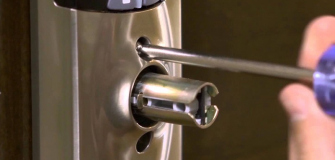How to have more organized office space in couple of easy steps
Share

If you suddenly realized how much time that disarray was costing you, you would rethink your opinion that you don’t have time for workplace organization.
It doesn’t count to occasionally move and rearrange heaps. In the event that you sweep the clutter into a bin or desk drawer, cleaning off your desk does not help either.
An office that is largely tidy and well-organized makes room for greater productivity and less inefficient use of time.
Your office can be organized in a few hours, rather than over several days. In fact, if you approach maintaining an orderly office as an ongoing project rather than a major assault, it will be lot more effective.
The following organizing advice will help you make your office a more tidy and effective workstation if you’re ready to get started.
1. Clean up your office
Shred, empty, and declutter everything you don’t need or want. Search the area. What have you not used recently?
Take one region at a time. Send it out for repair if it breaks, or throw it away. Throw anything away if you haven’t used it in months and can’t think of a time when you’ll actually need it. This applies to furnishings, tools, materials, etc.
Don’t forget to remove any trinkets, plants, or decorations that contribute to the worn-out appearance of your office or are covered in dust.
2. Compile and Reproduce
Every item that isn’t in its proper place should be gathered up and placed there.
3. Create “Work Zones”
Determine the activities that take place in each section of your office. Aside from your workstation, you’ll likely have a filing cabinet, shelves, and binders in your reference area, as well as a supply room (closet, shelves or drawers.) Instead of the regular cabinets, you can look for cost-effective electronic key cabinets, for more efficiency, as you can keep the track of when the keys are used.
As much as possible, make sure the right tools and materials are put in the right spot.
4. In-Near Proximity
Place the tools and supplies you use the most in a convenient location. You can store or put away items that you don’t frequently use.
5. Hire a Reliable Labeler
Pick a label maker that is easy to operate. Spend some time labeling the drawers, boxes, and shelves. It will not only help you remember where things go, but it will also assist anyone else who might need to locate, utilize, or store something in your office.
6. Check Your Filing Procedures
The need to keep paper files has diminished as we completely enter the digital era.
What does your shop offer digitally? Do you make duplicate files? Some of the folders and files you’ve used in the past might be unnecessary. Make sure you are performing routine backups if you are saving files on your computer.
Here are some suggestions for effective filing system storage:
- Establish a meeting folder. Include any “things to be discussed” along with any items that need to be handed off, reports that need to be given, etc. in this list. You’ll be more equipped for meetings and have less anxiety if a meeting is shifted.
- Establish a WOR folder. So many of our disorganized paperwork pertain to matters that must wait for another person’s response or action. Put them in a folder labeled WOR (Waiting on Response). Every few days, check it for any outstanding tasks you might need to follow up on.
- Storage boxes – To store archived files and remove them from your current file space, use affordable storage boxes.
- Magazine boxes – Store publications and catalogs you actually want to keep by placing them in magazine boxes or binders. Verify that you actually need them for reference or research before recycling or giving them away.
- Reading folder – Set aside a file for printed materials you want to read but aren’t in a rush.
- Archive files – When a project is finished, gather all of the materials and save them in one place. Maintain your “working folders” for ongoing projects.
- File once a week – Don’t let your paperwork accumulate. File all of your documents once a week after placing them in a “To File” folder.
7. Organize Your Desk
Only the objects required for everyday use should be returned after everything has been removed and thoroughly cleaned.
This Declutter Formula will assist you in getting rid of items without later regretting them if you are having trouble getting rid of clutter.
8. Set your desktop in order
It makes sense to arrange your desk now that you’ve simplified it.
To arrange the objects on your desk, use desktop organizers or containers. For papers, use trays, and for smaller objects, use containers.
Remember to bring your desktop PC! Verify that the images or files are all in logical folders. You should always clean off your computer’s desktop before leaving work.
9. Put your drawers in order
Put frequently used goods in the same drawer, such as stamps and envelopes or sticky notes and notepads.
Use drawer organizers to store little objects like paper clips and tacks. For personal goods, use a different drawer.
10. Different Inboxes
If you collaborate with others frequently, make a folder, tray, or inbox for each of them.
11. Remove Your Pile
You’ll hopefully stop making paper piles with your newly organized office, but you still need to go through the older ones.
Sort through the pile (if necessary, a bit at a time) and either place or discard each item.
12. Organize mail
Don’t simply throw your mail into a pile to be sorted or rummage through it to find the items you need straight away. Sort it right away into the appropriate categories: To act, To read, To file, To delegate or hand off.
13. Designate Disposal Dates
Not every document has to be kept around forever. When files or documents can be discarded or destroyed, indicate this on them.
A certain amount of time must be retained for certain legal or financial records. Make sure you are familiar with these prerequisites.
14. Set your desk upright
Do a quick straightening at the end of the day so you can start fresh the next day.
In the end we suggest you try one tip or all of them. Your efforts in setting up and keeping a productive workspace will pay off greatly.
You’ll be able to work and enjoy being clutter-free instead of wasting time seeking for things and moving mounds about.

















